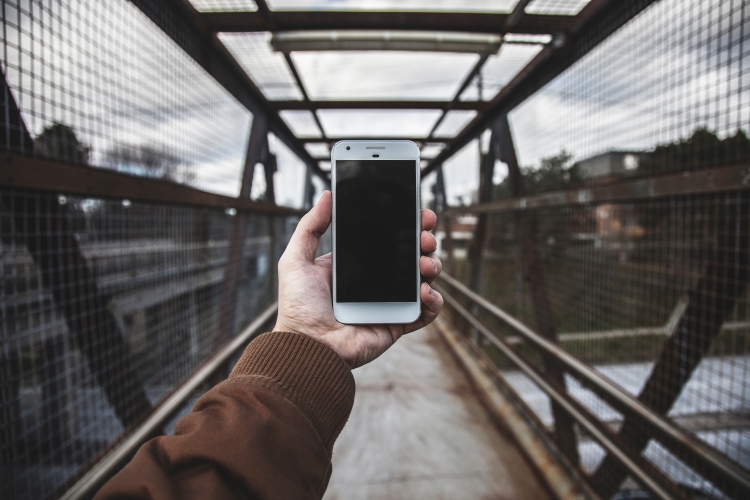The first stage of the Smart Generation project consisted in wide research (available in Italian) to identify the training needs of 12-17 year olds as well as teachers working with this group. The research was based on a survey to which over 1700 teenagers and 400 teachers responded.
Valeria Ferrarini from Centro Culturale F. L. Ferrari presented the outcomes of this research during the Lifelong Learning Week conference. Some interesting findings were that 95% of young people who responded said they own a smartphone and 62% that they have an internet subscription as part of their network agreement. 45% of young people responding said they started using a smartphone between 12-14 years of age, and 38% of respondents between 8-11 years of age.
Top three uses of smartphones were to chat on Whatsapp (showing a desire to stay in contact with people), to listen to music and to surf on the web. Some common behaviours were that when the phone is dead the person feels the need to charge it instantly, and that people are worried of being uninformed if they do not follow social media (a condition called “nomophobia”). When asked whether they had ever been insulted or harassed through the smartphone, 26% of participants responded yes. 35% had reported it to friends, 25% to family and 30% had not reported the harassment to anyone.
Through the survey, teachers were mainly asked about their use of smartphones as an educational tool. Their responses showed a certain awareness of its benefits, which had surprised partners, who initially though teachers would not use smartphones as part of their teaching methods.
Creating discussion around young people’s smartphone use
Based on their research, partners created a pedagogical model for smartphone education, with 12-14 and 15-19 year olds as target groups. The model is composed of four training itineraries: digital identity, digital relationships, digital safety and digital knowledge.
An innovative aspect here is the fact that smartphones are both the theme/content of the teaching modules, and used as a teaching medium during the course itself. Topics discussed include the use of selfies, the fact that not everything should be posted online and how people want to portray themselves when they post something.
Itineraries also raise awareness about the fact that what individuals put online can be used against them (now or in the future) and create discussion about how life should be lived in reality and not inside the smartphone. Workshops are one hour long and teaching material is available for each.
The model was tested in schools and youth organisations, mainly in Italy, Spain, Romania and Latvia. EAEA’s European network allowed partners to also involve other countries. Angel Sola Lopez from Fundación Cibervoluntarios noted that when testing the pedagogical model, partners noticed a generational gap between teachers and students: some teachers did not know how to use the tools their students were already using.
A conference participant noted that the notion of teacher/student is reversed here. Should it not be the student teaching the teachers? Aleksandra Kozyra from EAEA noted this had happened in Romania, where some teachers had had trouble preparing workshops and had asked students for help. These reversed roles had worked quite well. Another conference participant noted a teacher generally wants to be in a situation of control, but should instead be a person giving input. Both teacher and pupils can then learn from each other.
Recommendations for policy and practice
Aleksandra Kozyra from EAEA presented policy recommendations based on the project. A recommendation for public authorities is to issue clear guidelines on whether teachers can use smartphones as a teaching tool or not. Some recommendation applicable on both policy and provider levels are that smartphone education should be introduced into national curricula, and workshops should be organised about this in schools. There should also be more investment into digital skills training for teachers and support for staff in using mobile devices, as there is a strong need for this. Full policy recommendations are now available on the project website.
What is the impact of smartphones on the quality of education? Has the educational system adapted (or not) to the use of smartphones? One conference participant felt the classroom is a place for offline reflection and that smartphones are not necessary. While testing the educational model, Smart Generation partners had indeed found that most primary and secondary schools they contacted had banned smartphones during classes. Angel Sola Lopez noted the consortium’s suggestion, however, is to use smartphones not all the time but at certain moments during classes, for instance a few hours per week.
Smartphone use among teenagers is a fact and using it as an educational tool is a way to adapt to this situation. Alice Toni from Centro Culturale F. L. Ferrari noted it is a way to engage young people, as well as show them that smartphones can be used not only for spare time but also as a tool to learn something, and develop soft skills such as critical thinking and good relations with others.
More information
Text: Noora PuolamaaPhotos: Justin Main / Stocksnap.io

